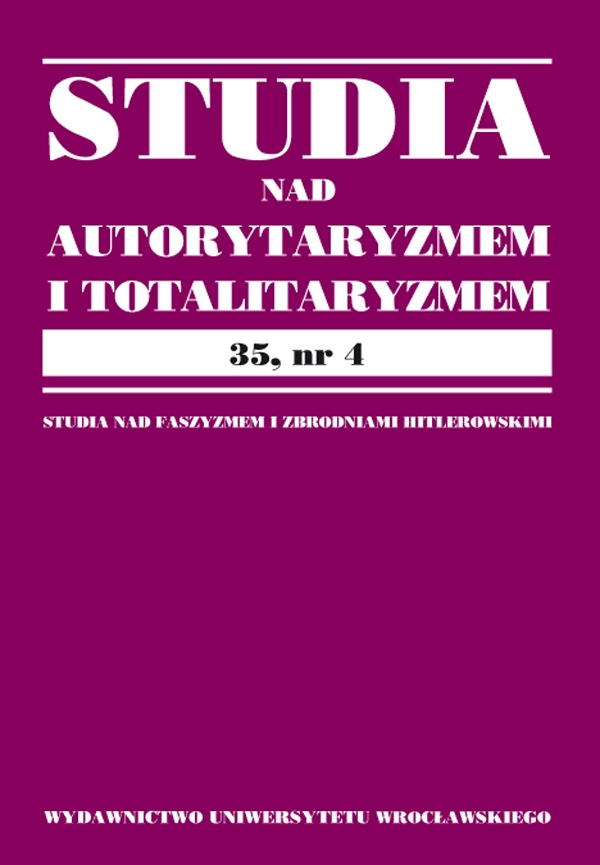

Artykuły

“ANTI-POLISH ACTION”. THE GENOCIDAL ETHNIC CLEANSING CONDUCTED BY THE OUN-B AND THE UPA DURING THE 1943–1945 PERIOD
The mass extermination of the Polish population of Volyn and Eastern Galicia undertaken during the 1943–1945 period by the Organization of Ukrainian Nationalists-B OUN-B and the Ukrainian Insurgent Army UPA were among the bloodiest episodes of the Second World War involving Polish people. The platform of the OUN before 1939 officially announced planned expulsion from future independent Ukrainian state of all landowners and colonizers settled after 1918 on disputable lands. It also did not hide the fact that this process will be accompanied by peasant lynching. At least some OUN’s activists wished that the cleansing would encompass the whole Polish population. J. Stecko’s government, established by Bandera’s supporters in 1941, wanted, in all probability, to lead a policy towards the Polish population modelled on German actions undertaken on lands incorporated in 1939 to the Reich, i.e. to exterminate Polish intelligentsia, to forcibly assimilate peasant population and to expel the rest of Poles. At the end of 1942, the activists of the OUN-B decided, at the moment of insurgency’s breakout, to start the expulsion of the Polish population, under a threat of death, from all lands deemed to be Ukrainian. In Volyn, this conception, probably on the initiative of local commandants of the OUN-B and the UPA, was implemented as a planned exterminatory action against Poles. This so-called anti-Polish action started on the 9th of February, 1943, and gradually spread to the whole Volyn. The biggest wave of attacks took place on the 11th of July, 1943, when around one hundred Polish settlements were destroyed and their inhabitants murdered. In the summer of 1943, the leaders of OUN-B, after a stormy conference, accepted anti-Polish actions undertaken by Volynian troops of the UPA. They also decided to conduct an anti-Polish cleansing in Eastern Galicia but in this case they adopted a policy of return to the previous conception of the expulsion of Poles under a threat of death. In the second half of 1943, Bandera’s supporters in Galicia began the slaughter of the so-called Polish activists priests, teachers, foresters. During the second stage of the operation selected Polish villages were attacked, particularly those where the strong Polish self-defense existed. In April of 1944, mass action focused on Poles’ expulsion started; during many attacks — contrary to official instructions permitting to kill “only” males — the UPA’s troops were murdering every person of Polish descent. Only the front’s oncoming and the entry of the Red Army prompted the OUN-B and the UPA to slowly cease further anti-Polish cleansing. Polish losses resulting from the UPA’s actions probably amounted to one hundred thousand killed the majority of them in Volyn where, according to determinations made by Władysław and Ewa Siemaszko, between forty to even sixty thousands of Poles were killed in 1943 alone. As a result of Polish retaliatory actions, up to 1947, over a dozen thousands of Ukrainians were in turn killed. Mass murder of Polish civilian population was a priori assumed in the OUN-B’s and the UPA’s strategies. For this reason the majority of Polish historians consider their policies to, at the very least, bear the characteristics of genocide. According to the author of this article, the “anti-Polish action” of the OUN-B and the UPA should be regarded as a genocidal ethnic cleansing.